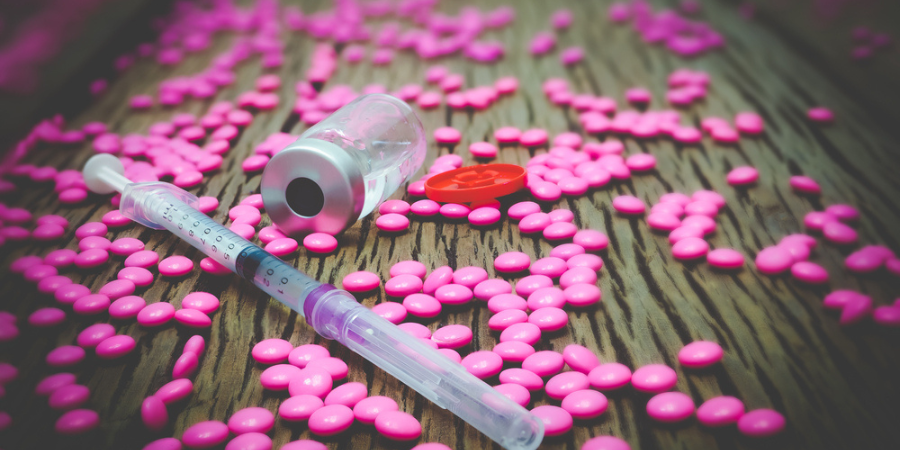Despite its name, pink cocaine does not necessarily contain cocaine but is often a mixture of various substances, including MDMA, ketamine, and 2C-B. This drug is typically found in powder or pill form and is known for its vibrant pink colour, which makes it visually appealing to users.

What is pink cocaine?
“Pink cocaine,” also known by street names such as “cocaina rosada,” “tuci,” “tucibi,” “pink powder,” “Eros,” and “Venus,” is a synthetic designer drug that has gained popularity in the party scene, particularly in Latin America and some. It is a mixture of various synthetic substances, most commonly including MDMA (ecstasy), ketamine, and amphetamines. Other possible ingredients can be LSD, mescaline, and sometimes opioids like fentanyl.
The chemical composition of pink cocaine is highly variable and often unregulated, leading to significant risks for users. It can be a combination of different psychoactive substances, which results in unpredictable effects. The drug may be misrepresented, with users believing it to contain specific substances like 2C-B, when in reality, it often lacks this component. The variability in its composition makes each batch potentially dangerous, with the possibility of severe health effects including addiction, overdose, and fatal interactions.
Differentiation from traditional cocaine
Chemically, traditional cocaine is a naturally occurring alkaloid, while pink cocaine is a designer drug involving phenylethylamine derivatives. This difference in chemical structure means pink cocaine also has hallucinogenic properties, unlike the purely stimulant effects of traditional cocaine. Users of pink cocaine report both euphoric and psychedelic experiences, including altered sensory perception and mood swings.
When compared to other stimulants like methamphetamine or synthetic drugs like ecstasy (MDMA), pink cocaine offers a unique combination of stimulant and hallucinogenic effects. Methamphetamine, like traditional cocaine, significantly increases dopamine but does not cause hallucinations. Ecstasy, on the other hand, enhances mood and perception, similar to pink cocaine, but lacks the intense stimulant properties.
Origins
The drug is believed to have originated in Colombia, where it became popular in the club scenes of major cities. Its spread has been eased by its appeal as a novel party drug that combines the effects of multiple substances, offering a unique and intense high.
The drug’s popularity surged during the COVID-19 pandemic, as lockdowns and social isolation drove increased drug use.
Reasons behind popularity
In nightlife and rave scenes, there’s a constant demand for new and exciting substances. Pink cocaine fits this demand by offering a fresh experience and is often more accessible and affordable compared to buying multiple individual drugs.
Psychological effects
The psychological effects of pink cocaine are profound and varied due to its combination of stimulant and hallucinogenic properties. Short-term psychological effects include:
- Euphoria
- Increased alertness
- Enhanced sensory perception
However, these can quickly give way to negative experiences such as anxiety, paranoia, panic, and hallucinations.
Long-term psychological effects may include:
- Persistent anxiety
- Depression
- Cognitive impairments
- An increased risk of psychosis
The drug’s addictive potential is high, leading to compulsive use and severe psychological dependence.
Health risks
One of the primary health risks associated with pink cocaine is the high potential for overdose. Symptoms of an overdose can include:
- Severe agitation
- Hallucinations
- High blood pressure
- Rapid heart rate
- Hyperthermia
These symptoms can escalate to life-threatening conditions such as seizures, cardiac arrest, or respiratory failure.
Pink cocaine is highly addictive. Regular use can lead to dependence and a range of long-term health consequences. Chronic use of pink cocaine can result in significant mental health issues such as anxiety, depression, paranoia, and psychosis. Additionally, the stimulant properties of the drug can cause serious cardiovascular problems, including hypertension, arrhythmias, and increased risk of heart attacks and strokes.
Given its unpredictable nature and the severe health risks involved, the use of pink cocaine is extremely hazardous and poses significant threats to both physical and mental health.
Legality
An issue for authorities is the drug’s inconsistent composition. This variability complicates enforcement and health responses, as each batch can have different effects and risks. The unregulated nature of its production means users often have no way of knowing what they are consuming, increasing the risk of overdose and adverse reactions.
In the UK, there has been a push for better drug-checking services at festivals and clubs to help users identify potentially harmful substances before consumption. Additionally, international collaboration has been strengthened to tackle the trafficking of synthetic drugs like pink cocaine, aiming to disrupt supply chains originating from Latin America.
Treatment options
UKAT offers specialised programmes, including medically supervised detoxification to manage withdrawal symptoms safely. Following detox, individuals can participate in residential rehabilitation, which provides a structured environment with therapies such as cognitive-behavioural therapy (CBT), group counselling, and holistic treatments like yoga and mindfulness.
If you or someone you know is struggling with addiction, seeking professional help from specialised services like UKAT can be a pivotal step towards recovery and a healthier life.





